Have you ever found yourself in a situation where you need to access a locked cabinet, but you don’t have the key? Perhaps you lost the key, or the key broke inside the lock. Whatever the reason may be, picking a cabinet lock is a useful skill to have.
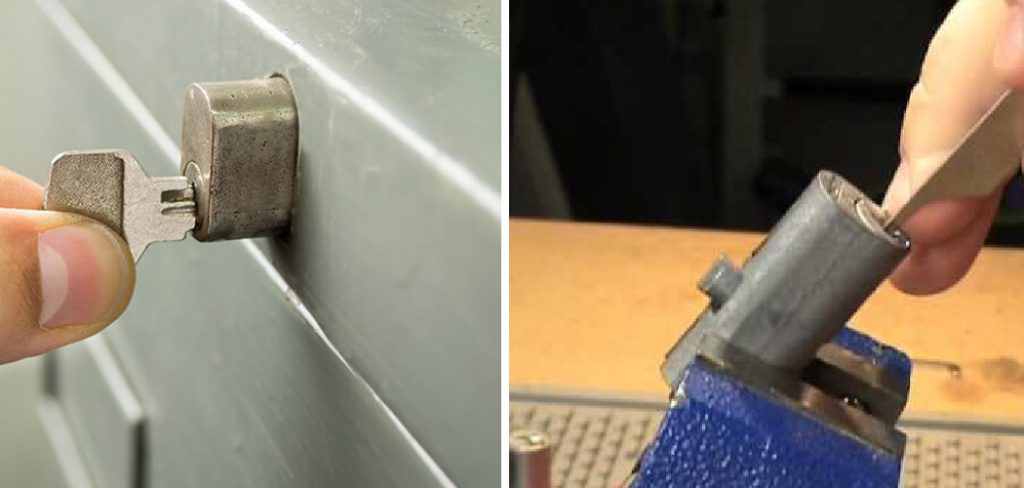
In this blog post, we will be sharing a step-by-step guide on how to pick a cabinet lock. But please note we are not condoning any illegal activity – this guide is for educational purposes only.
Can You Pick a Cabinet Lock?
Cabinet locks are familiar in our everyday lives, from home cabinets to workplace storage units. While some may see cabinet locks as an effective way of keeping their valuables secured, others may find themselves pondering the possibility of picking the lock. Is it possible to pick a cabinet lock? The answer is yes; with patience, a steady hand, and the right tools, one can potentially open a cabinet lock without a key.
However, it is important to note that picking a lock one does not own could be illegal and should be avoided. It is always better to seek proper authorization before picking a cabinet lock.
Why Should You Pick a Cabinet Lock?
Are you tired of constantly worrying about the security of your belongings? Picking a cabinet lock may be the solution you’ve been searching for. By selecting a high-quality lock, you can rest easy knowing your possessions are safe and secure.
Whether you’re looking to protect sensitive documents, expensive jewelry, or valuable electronics, a cabinet lock is a simple yet effective way to keep your items out of the wrong hands. Plus, choosing and installing a lock can be quite satisfying, giving you a sense of control and accomplishment. So why wait? Start researching your options today and take the first step towards peace of mind.
How to Pick a Cabinet Lock: A Step-by-Step Guide
Step 1: Assess the Lock
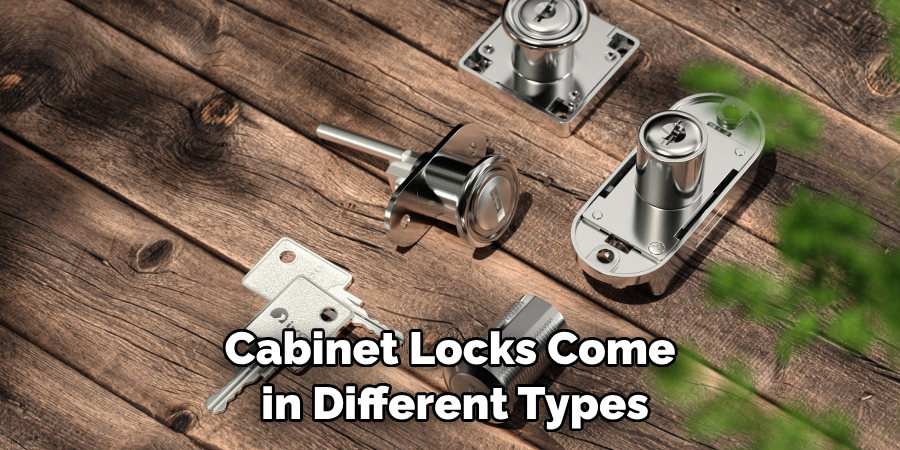
Before picking the lock, you must assess the type of lock you’re dealing with. Cabinet locks come in different types, such as wafer-tumbler, disc-detainer, and pin-tumbler locks. Each type of lock has its unique characteristics and requires different picking techniques. Once you identify the type of lock you’re dealing with, you can proceed with the picking process.
Step 2: Gather the Tools
The next step is to gather the tools necessary for picking the lock. For cabinet locks, you will need a tension wrench and a pick. A tension wrench is used to apply rotational pressure to the lock cylinder, while the pick is used to manipulate the lock pins. You can purchase these tools online or at a locksmith store.
Step 3: Apply Tension
Insert the tension wrench into the bottom of the keyhole and apply slight tension in the direction you would turn the key to unlock the cabinet. Hold the wrench in place with your left hand.
Step 4: Pick the Lock
Insert the pick into the top of the keyhole. Gently lift and press on each pin until they set into place. You can feel a slight click when a pin sets into place. Continue lifting each pin until all pins are set. If you feel resistance while picking, you may need to adjust the tension you’re applying with the wrench.
Step 5: Check for Success
Once all the pins have been set, you should be able to rotate the tension wrench and unlock the cabinet. If you can’t open the lock after setting all the pins, try picking it again, ensuring you are applying enough pressure with the wrench.
Step 6: Remove the Tension Wrench and Pick
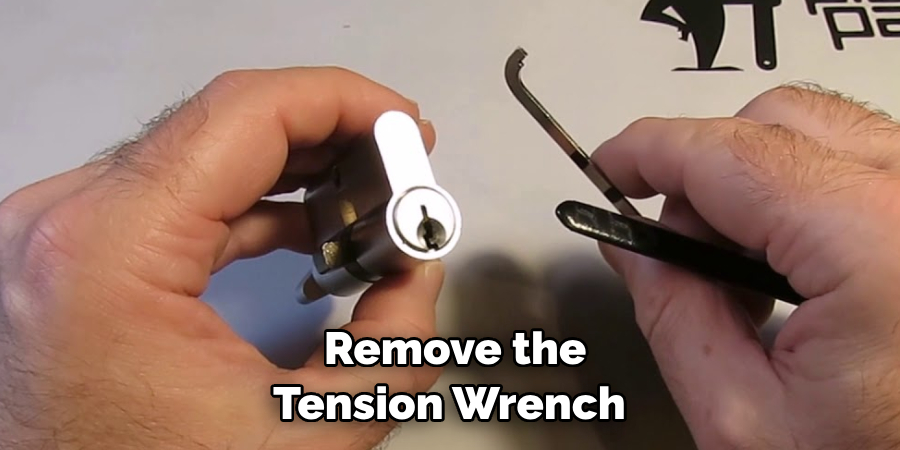
Carefully remove the tension wrench and pick from the lock. Take your time and be gentle when removing the tools, as you don’t want to damage the lock or yourself in the process.
Step 7: Test The Lock
Once you’ve removed the tools, test out your work by inserting a key into the lock. If the key turns and opens the cabinet, you successfully pick the lock! If not, try picking it again and check to ensure you’re applying tension correctly.
Anyone can learn how to pick a cabinet lock with practice and patience. After gaining experience in this process, you will be able to open many types of locks with ease. Keep at it, and soon you will be a master lock-picker!
5 Considerations Things When You Need to Pick a Cabinet Lock
1. Type of Lock
The first consideration when picking a cabinet lock is the type of lock you have. Cabinet locks come in two main types: pin tumbler and wafer tumbler locks. Pin tumbler locks are more common and usually easier to pick, while wafer tumbler locks are more secure but can be more difficult to pick. It is important to know which type of lock you have before attempting to pick it.
2. Lock Pick Set
The second consideration when picking a cabinet lock is the type of lock pick set you will need. Several types of lock pick sets are available, ranging from basic sets with just a few picks to specialized sets that contain dozens of picks and other tools. It is important to choose the right set for your particular needs in order to ensure success when picking the lock.
3. Practice Locks
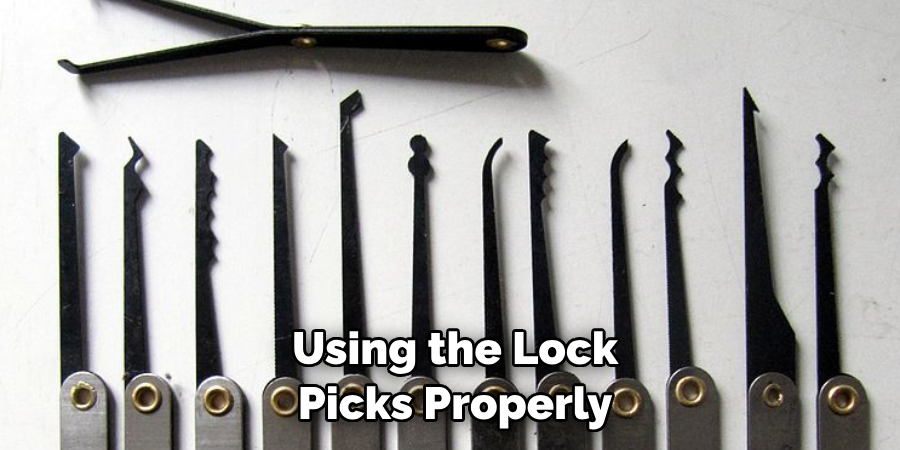
The third consideration when picking a cabinet lock is practice locks. While it may be tempting to jump right into picking the actual cabinet lock, it is important to practice on some dummy locks first to get the hang of using the lock picks properly. This will help ensure that you do not damage or break any parts of the actual cabinet lock while attempting to pick it open.
4. Patience
The fourth consideration when picking a cabinet lock is patience. Picking a cabinet lock can take time and several attempts before you can open it up without damaging any parts or leaving any marks behind on the surface of the door or frame surrounding it. It is important to remain patient throughout this process and not rush or become frustrated if you do not succeed immediately with your attempts to open the lock.
5. Security Measures
The fifth and final consideration when picking a cabinet lock is security measures such as deadbolts or additional padlocks that may be present on top of the existing cabinet door latch mechanism itself. If these additional security measures are present, they must be dealt with before attempting to pick the actual cabinet door latch open, as they can prevent access even after successfully picking open the original latch mechanism itself.
5 Benefits of Pick a Cabinet Lock
1. Security
One of the biggest benefits of using a cabinet lock is providing an extra layer of security. Cabinet locks are designed to be tamper-resistant and difficult to pick, so they can help protect your valuables from thieves or other unwanted visitors. Additionally, cabinet locks can also help prevent children from accessing dangerous items such as chemicals or firearms.
2. Easy Installation
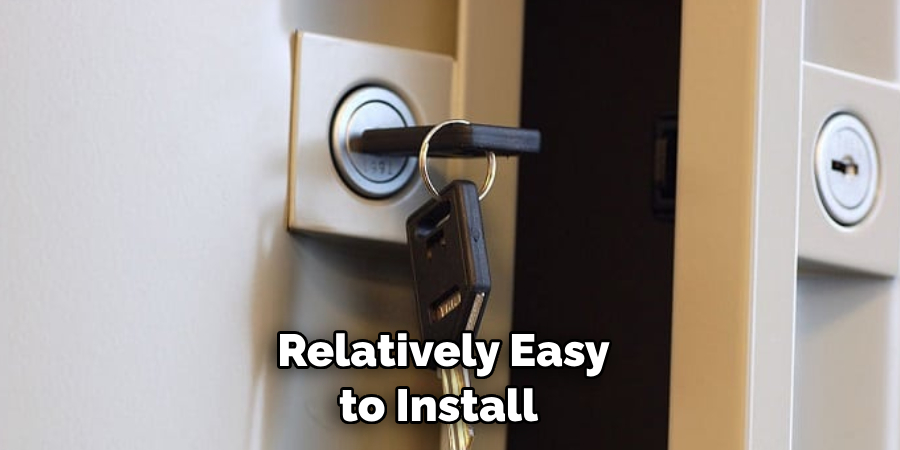
Another benefit of using a cabinet lock is that it is relatively easy to install and requires no special tools or knowledge. Most cabinet locks come with detailed instructions on installing them properly, so even someone with limited DIY experience should have no trouble installing one. Additionally, many modern cabinet locks are designed to fit into existing holes in the door or frame, so you don’t have to worry about drilling new ones.
3. Durability
Cabinet locks are also designed to be durable and long-lasting, so you don’t have to worry about replacing them frequently. Most cabinet locks are made from high-quality materials such as steel or brass and feature corrosion-resistant finishes, so they should last for years without any issues. Most modern cabinet locks also feature anti-drill plates and other security features that make them more difficult for thieves to pick or break into.
4. Variety
Another great benefit of using a cabinet lock is that a wide variety of styles are available on the market today, so you can easily find one that meets your needs. From simple keyed models to combination models with multiple locking points, there’s sure to be a style that fits your needs perfectly.
Additionally, many modern cabinet locks also come with features such as adjustable lengths and reversible keys for added convenience and flexibility when it comes time to open the lock again after installation.
5. Cost-Effective
Finally, another great benefit of using a cabinet lock is that it is generally very cost-effective compared to other security devices like alarm systems or surveillance cameras. Depending on the type of lock you choose, you may even be able to get away with purchasing just one instead of having several different ones installed around your home or business premises for added protection.
Conclusion
Picking a cabinet lock can be daunting, but with the right tools and techniques, you can do it successfully. Remember to assess the lock, gather the tools, apply tension, and pick the lock. Always keep in mind that picking locks can be illegal under certain circumstances, so use this guide for educational purposes only.
If you’ve tried these steps and still can’t get the lock open, it’s best to call a professional locksmith for assistance. Thanks for reading our post about how to pick a cabinet lock.
About
Safety Fic is a distinguished figure in the world of Diy design, with a decade of expertise creating innovative and sustainable Diy solutions. His professional focus lies in merging traditional craftsmanship with modern manufacturing techniques, fostering designs that are both practical and environmentally conscious. As the author of diy, Safety Fic delves into the art and science of Safety Fic-making, inspiring artisans and industry professionals alike.
Education RMIT University
(Melbourne, Australia) Associate Degree in Design (Safety Fic) Focus on sustainable design, industry-driven projects, and practical craftsmanship. Gained hands-on experience with traditional and digital manufacturing tools, such as CAD and CNC software.
Nottingham Trent University
(United Kingdom) Bachelor’s in diyfastly.com and Product Design (Honors) Specialized in product design with a focus on blending creativity with production techniques. Participated in industry projects, working with companies like John Lewis and Vitsoe to gain real-world insights.
Publications and Impact
In diy, Safety Fic his insights on indoor design processes, materials, and strategies for efficient production. His writing bridges the gap between artisan knowledge and modern industry needs, making it a must-read for both budding designers and seasoned professionals.
